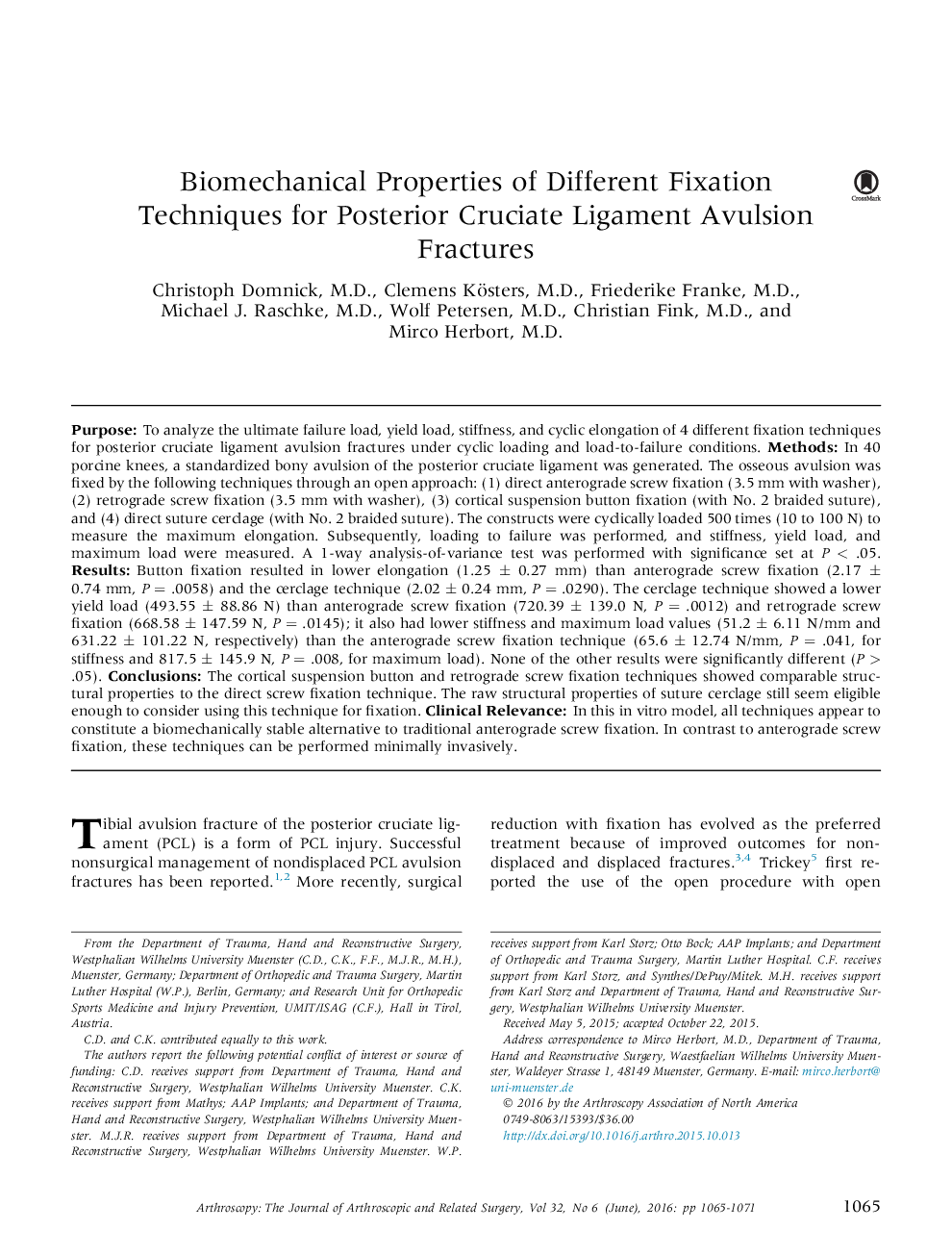| کد مقاله | کد نشریه | سال انتشار | مقاله انگلیسی | نسخه تمام متن |
|---|---|---|---|---|
| 4041846 | 1603469 | 2016 | 7 صفحه PDF | دانلود رایگان |
PurposeTo analyze the ultimate failure load, yield load, stiffness, and cyclic elongation of 4 different fixation techniques for posterior cruciate ligament avulsion fractures under cyclic loading and load-to-failure conditions.MethodsIn 40 porcine knees, a standardized bony avulsion of the posterior cruciate ligament was generated. The osseous avulsion was fixed by the following techniques through an open approach: (1) direct anterograde screw fixation (3.5 mm with washer), (2) retrograde screw fixation (3.5 mm with washer), (3) cortical suspension button fixation (with No. 2 braided suture), and (4) direct suture cerclage (with No. 2 braided suture). The constructs were cyclically loaded 500 times (10 to 100 N) to measure the maximum elongation. Subsequently, loading to failure was performed, and stiffness, yield load, and maximum load were measured. A 1-way analysis-of-variance test was performed with significance set at P < .05.ResultsButton fixation resulted in lower elongation (1.25 ± 0.27 mm) than anterograde screw fixation (2.17 ± 0.74 mm, P = .0058) and the cerclage technique (2.02 ± 0.24 mm, P = .0290). The cerclage technique showed a lower yield load (493.55 ± 88.86 N) than anterograde screw fixation (720.39 ± 139.0 N, P = .0012) and retrograde screw fixation (668.58 ± 147.59 N, P = .0145); it also had lower stiffness and maximum load values (51.2 ± 6.11 N/mm and 631.22 ± 101.22 N, respectively) than the anterograde screw fixation technique (65.6 ± 12.74 N/mm, P = .041, for stiffness and 817.5 ± 145.9 N, P = .008, for maximum load). None of the other results were significantly different (P > .05).ConclusionsThe cortical suspension button and retrograde screw fixation techniques showed comparable structural properties to the direct screw fixation technique. The raw structural properties of suture cerclage still seem eligible enough to consider using this technique for fixation.Clinical RelevanceIn this in vitro model, all techniques appear to constitute a biomechanically stable alternative to traditional anterograde screw fixation. In contrast to anterograde screw fixation, these techniques can be performed minimally invasively.
Journal: Arthroscopy: The Journal of Arthroscopic & Related Surgery - Volume 32, Issue 6, June 2016, Pages 1065–1071
